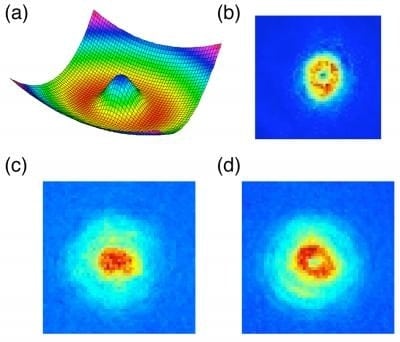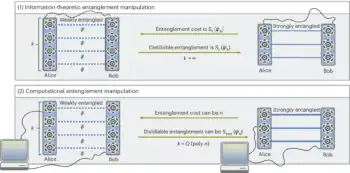
Superfluidity, where a liquid flows without friction, and superconductivity, where an electric current flows without resistance, have become familiar low-temperature phases of condensed matter. Now physicists in the US have observed similar “persistent flow” in a Bose–Einstein condensate (BEC), which might help to explain how the BEC phase is related to superconductors and superfluids.
A BEC occurs when a gas of bosons, or atoms of integer spin number, is cooled to such low temperatures that the vast majority of them fall into the same zero-momentum state. This means that the atoms behave as a single coherent entity, a property shared by superfluids and superconductors. However, these phases are not pure BECs because they both have strong atomic interactions, which drag many of the atoms into higher momentum states. By contrast a BEC only has weak interactions between atoms.
Scientists have shown before that, despite the differences, BECs and superfluids can both behave similarly by supporting quantized vortices of atoms. But until now they have not been able to make a BEC exhibit one of the most recognizable trademarks of superfluids and superconductors — persistent flow.
Transferring momentum
Bill Phillips, Kris Helmerson and colleagues at the National Institute of Standards and Technology (NIST) in Maryland can instigate persistent flow in a BEC consisting of a gas of sodium atoms cooled to just above absolute zero.
They begin by trapping the BEC into a circular shape with magnetic fields, and then puncture the middle with a laser to create a repulsive potential — essentially making the trap toroidal, or ring-shaped. They then shine two laser beams into the BEC from opposite directions. Atoms absorb a photon from one of these beams and then re-emit it into the other, leaving themselves with the difference in angular momentum of the beams.
The result of this momentum transition is that all of the atoms in the ring are set in persistent flow (Phys. Rev. Lett. 99 260401). The NIST team have made it continue for up to 10 seconds, but Helmerson told physicsworld.com that it is only technical limitations preventing them from making it perpetual. “If there was no drift in the experimental conditions and the vacuum [surrounding the BEC] was much better, then the flow should continue indefinitely,” he said.
The researchers suggest that a quantum tunnel barrier could be inserted into the ring to make it analogous to a “superconducting quantum interference device” (SQUID), possibly shedding light on the similarities between BECs and superconductors. In addition, they think they could modify their ring to tightly confine the gas, which might help physicists to understand how BECs are related to superfluids in one or two dimensions.


